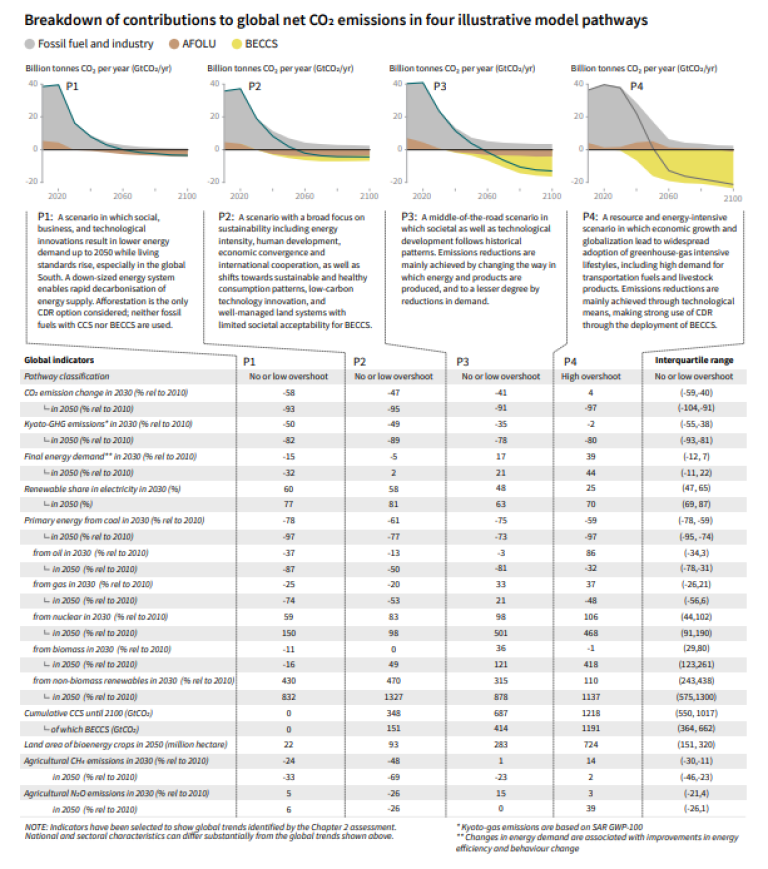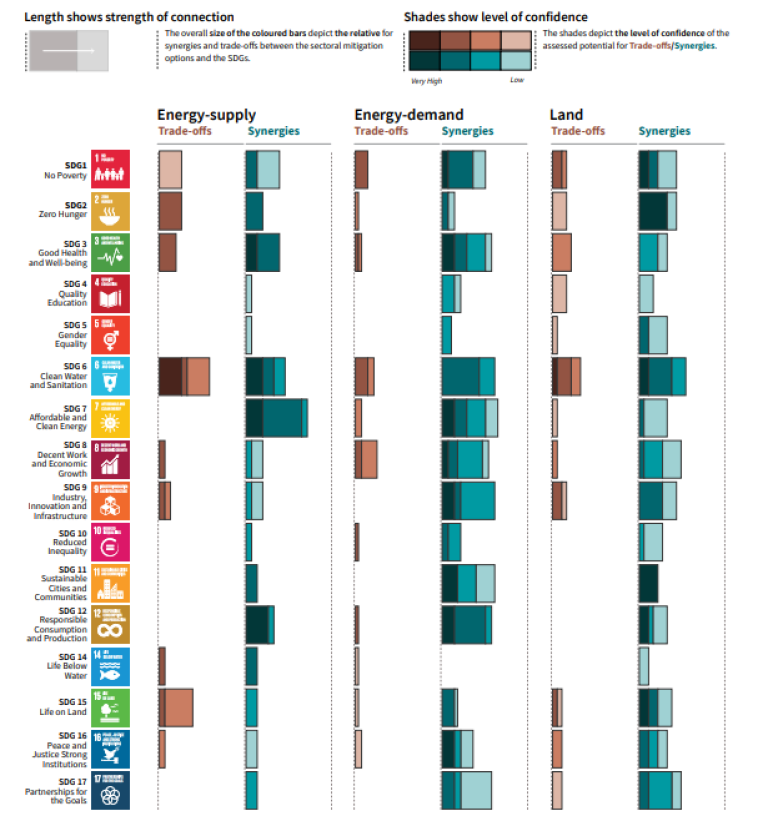1,5 graders haiku
"Will you listen please?"
Andy Reisinger is Deputy Director of the New Zealand Agricultural Greenhouse Gas Research Centre, vice-chair of Working Group III of the Intergovernmental Panel on Climate Change (IPCC) and contributing author to the special report on 1.5 °C.
After the report was published he summed up the Summary for Policymakers (SPM) in a haiku poem on twitter, with references and all.
The haiku is published with permission below, together with the relevant paragraphs from the SPM.
We wrote this report
at your request, and with care.
Will you listen please?
We're at 1 degree
now and will hit 1.5
within three decades.
A1. Human activities are estimated to have caused approximately 1.0°C of global warming5 above pre-industrial levels, with a likely range of 0.8°C to 1.2°C. Global warming is likely to reach 1.5°C between 2030 and 2052 if it continues to increase at the current rate. (high confidence)
Past emissions will
warm the Earth for centuries -
but there's still a choice.
A2. Warming from anthropogenic emissions from the pre-industrial period to the present will persist for centuries to millennia and will continue to cause further long-term changes in the climate system, such as sea level rise, with associated impacts (high confidence), but these emissions alone are unlikely to cause global warming of 1.5°C (medium confidence).
Climate risk increase
with every half degree.
Some are real now.
A3. Climate-related risks for natural and human systems are higher for global warming of 1.5°C than at present, but lower than at 2°C (high confidence). These risks depend on the magnitude and rate of warming, geographic location, levels of development and vulnerability, and on the choices and implementation of adaptation and mitigation options (high confidence)
More warming, higher
seas. Maybe much higher. Could
wake sleeping giants.
B2. By 2100, global mean sea level rise is projected to be around 0.1 metre lower with global warming of 1.5°C compared to 2°C (medium confidence). Sea level will continue to rise well beyond 2100 (high confidence), and the magnitude and rate of this rise depends on future emission pathways. A slower rate of sea level rise enables greater opportunities for adaptation in the human and ecological systems of small islands, low-lying coastal areas and deltas (medium confidence).
Warming is bad news
for many species. Once gone,
we can't bring them back.
B3. On land, impacts on biodiversity and ecosystems, including species loss and extinction, are projected to be lower at 1.5°C of global warming compared to 2°C. Limiting global warming to 1.5°C compared to 2°C is projected to lower the impacts on terrestrial, freshwater, and coastal ecosystems and to retain more of their services to humans (high confidence).
People are affected
by all this; some will struggle
much more than others.
B5.1. Populations at disproportionately higher risk of adverse consequences of global warming of 1.5°C and beyond include disadvantaged and vulnerable populations, some indigenous peoples, and local communities dependent on agricultural or coastal livelihoods (high confidence). Regions at disproportionately higher risk include Arctic ecosystems, dryland regions, small-island developing states, and least developed countries (high confidence). Poverty and disadvantages are expected to increase in some populations as global warming increases; limiting global warming to 1.5°C, compared with 2°C, could reduce the number of people both exposed to climate-related risks and susceptible to poverty by up to several hundred million by 2050 (medium confidence).
1.5 degrees
needs global carbon-zero
by 2050.
C1. In model pathways with no or limited overshoot of 1.5°C, global net anthropogenic co₂ emissions decline by about 45% from 2010 levels by 2030 (40–60% interquartile range), reaching net zero around 2050 (2045–2055 interquartile range). For limiting global warming to below 2°C11 co₂ emissions are projected to decline by about 20% by 2030 in most pathways (10–30% interquartile range) and reach net zero around 2075 (2065–2080 interquartile range). Non-co₂ emissions in pathways that limit global warming to 1.5°C show deep reductions that are similar to those in pathways limiting warming to 2°C. (high confidence)
All emission paths
to 1.5 degrees cut
methane hard and fast.
C1.2. Modelled pathways that limit global warming to 1.5°C with no or limited overshoot involve deep reductions in emissions of methane and black carbon (35% or more of both by 2050 relative to 2010). These pathways also reduce most of the cooling aerosols, which partially offsets mitigation effects for two to three decades. Non-co₂ emissions can be reduced as a result of broad mitigation measures in the energy sector. In addition, targeted non-co₂ mitigation measures can reduce nitrous oxide and methane from agriculture, methane from the waste sector, some sources of black carbon, and hydrofluorocarbons. High bioenergy demand can increase emissions of nitrous oxide in some 1.5°C pathways, highlighting the importance of appropriate management approaches. Improved air quality resulting from projected reductions in many non-co₂ emissions provide direct and immediate population health benefits in all 1.5°C model pathways. (high confidence)
Carbon budgets are
uncertain but either way
quickly depleted.
C1.3. Limiting global warming requires limiting the total cumulative global anthropogenic emissions of co₂ since the preindustrial period, i.e. staying within a total carbon budget (high confidence). By the end of 2017, anthropogenic co₂ emissions since the preindustrial period are estimated to have reduced the total carbon budget for 1.5°C by approximately 2200 ± 320 Gtco₂ (medium confidence). The associated remaining budget is being depleted by current emissions of 42 ± 3 Gtco₂ per year (high confidence). The choice of the measure of global temperature affects the estimated remaining carbon budget. Using global mean surface air temperature, as in AR5, gives an estimate of the remaining carbon budget of 580 Gtco₂ for a 50% probability of limiting warming to 1.5°C, and 420 Gtco₂ for a 66% probability (medium confidence). Alternatively, using GMST gives estimates of 770 and 570 Gtco₂, for 50% and 66% probabilities, respectively (medium confidence). Uncertainties in the size of these estimated remaining carbon budgets are substantial and depend on several factors. Uncertainties in the climate response to co₂ and non-co₂ emissions contribute ±400 Gtco₂ and the level of historic warming contributes ±250 Gtco₂ (medium confidence). Potential additional carbon release from future permafrost thawing and methane release from wetlands would reduce budgets by up to 100 Gtco₂ over the course of this century and more thereafter (medium confidence). In addition, the level of non-co₂ mitigation in the future could alter the remaining carbon budget by 250 Gtco₂ in either direction
Reduced emissions
won't be enough. Put carbon
back where it belongs.
C3. All pathways that limit global warming to 1.5°C with limited or no overshoot project the use of carbon dioxide removal (CDR) on the order of 100–1000 Gtco₂ over the 21st century. CDR would be used to compensate for residual emissions and, in most cases, achieve net negative emissions to return global warming to 1.5°C following a peak (high confidence). CDR deployment of several hundreds of Gtco₂ is subject to multiple feasibility and sustainability constraints (high confidence). Significant near-term emissions reductions and measures to lower energy and land demand can limit CDR deployment to a few hundred Gtco₂ without reliance on bioenergy with carbon capture and storage (BECCS) (high confidence)
Feed more people and
remove carbon at large scale -
in models yes, but...?
Current NDCs
across countries won't achieve
what we agreed to.
D1. Estimates of the global emissions outcome of current nationally stated mitigation ambitions as submitted under the Paris Agreement would lead to global greenhouse gas emissions in 2030 of 52–58 Gtco₂eq yr-1 (medium confidence). Pathways reflecting these ambitions would not limit global warming to 1.5°C, even if supplemented by very challenging increases in the scale and ambition of emissions reductions after 2030 (high confidence). Avoiding overshoot and reliance on future large-scale deployment of carbon dioxide removal (CDR) can only be achieved if global co₂ emissions start to decline well before 2030 (high confidence).
Rapid reductions
demand unprecedented
transformations now.
C2. Pathways limiting global warming to 1.5°C with no or limited overshoot would require rapid and far-reaching transitions in energy, land, urban and infrastructure (including transport and buildings), and industrial systems (high confidence). These systems transitions are unprecedented in terms of scale, but not necessarily in terms of speed, and imply deep emissions reductions in all sectors, a wide portfolio of mitigation options and a significant upscaling of investments in those options (medium confidence).
1.5 degrees
needs higher carbon prices
to make it happen.
C2.7. Modelled pathways limiting global warming to 1.5°C with no or limited overshoot project a wide range of global average discounted marginal abatement costs over the 21st century. They are roughly 3-4 times higher than in pathways limiting global warming to below 2°C (high confidence). The economic literature distinguishes marginal abatement costs from total mitigation costs in the economy. The literature on total mitigation costs of 1.5°C mitigation pathways is limited and was not assessed in this report. Knowledge gaps remain in the integrated assessment of the economy wide costs and benefits of mitigation in line with pathways limiting warming to 1.5°C.
Policies can drive
investment, innovation,
and behaviour change.
C2. See previous
There are som many
synergies with SDGs:
Use them or lose them.
Adapt, mitigate
and develop: with great care
we could have it all.
Section D. Strengthening the Global Response in the Context of Sustainable Development and Efforts to Eradicate Poverty (D1-D7.4)
Good development
helps climate, and good climate
helps development.
D2. The avoided climate change impacts on sustainable development, eradication of poverty and reducing inequalities would be greater if global warming were limited to 1.5°C rather than 2°C, if mitigation and adaptation synergies are maximized while trade-offs are minimized (high confidence)
D3. Adaptation options specific to national contexts, if carefully selected together with enabling conditions, will have benefits for sustainable development and poverty reduction with global warming of 1.5°C, although trade-offs are possible (high confidence).
D4. Mitigation options consistent with 1.5°C pathways are associated with multiple synergies and trade-offs across the Sustainable Development Goals (SDGs). While the total number of possible synergies exceeds the number of trade-offs, their net effect will depend on the pace and magnitude of changes, the composition of the mitigation portfolio and the management of the transition. (high confidence)

